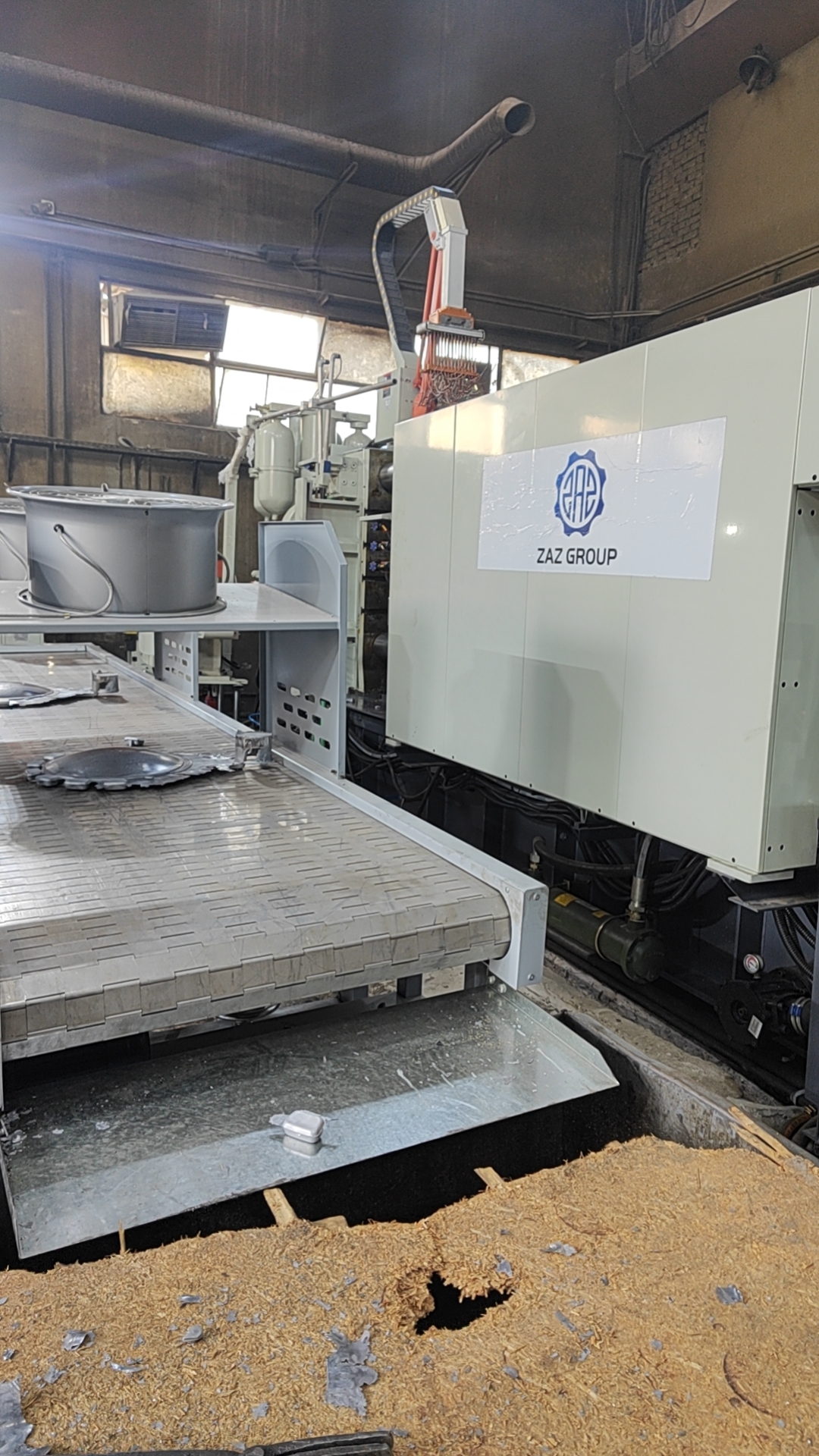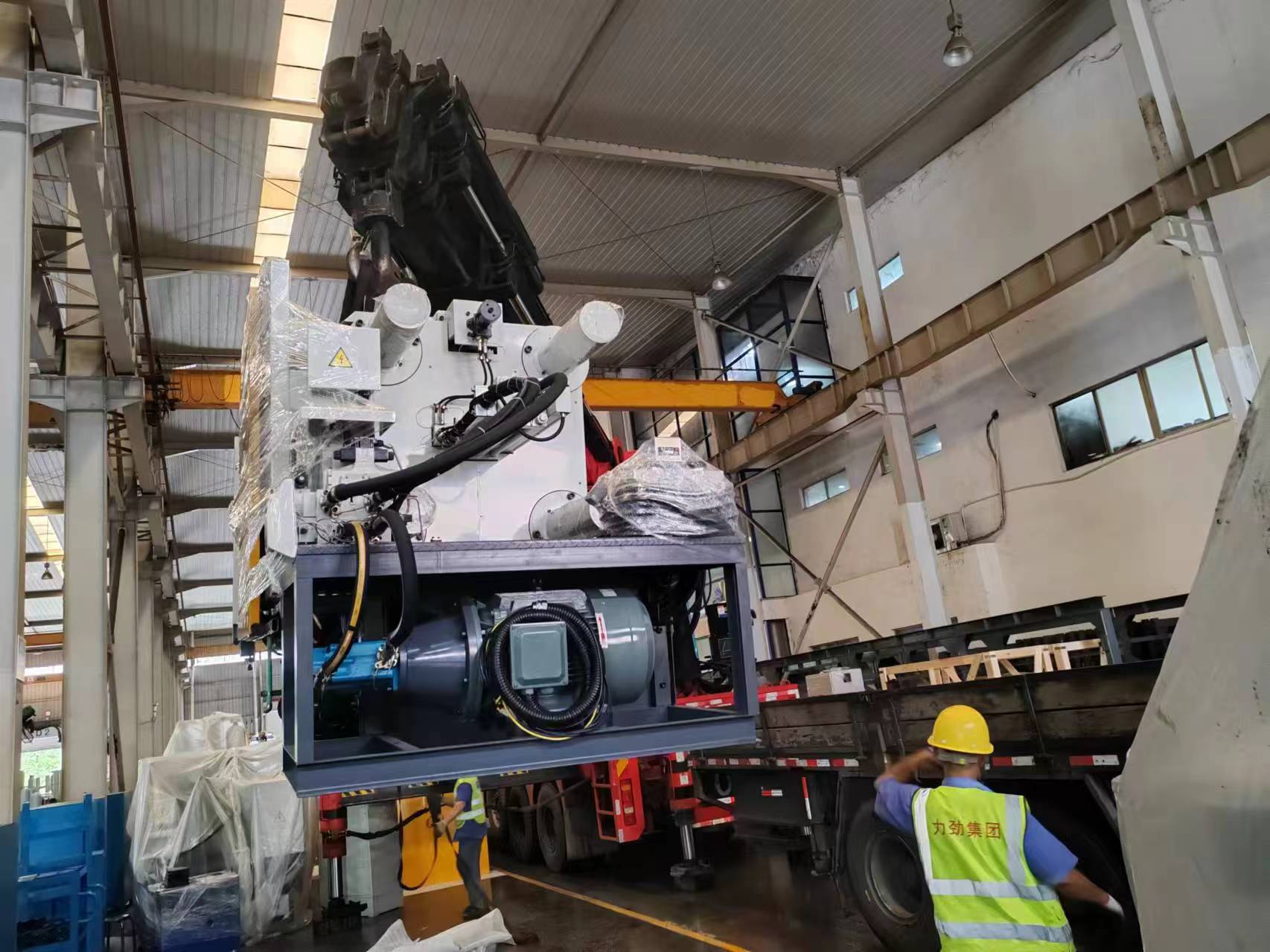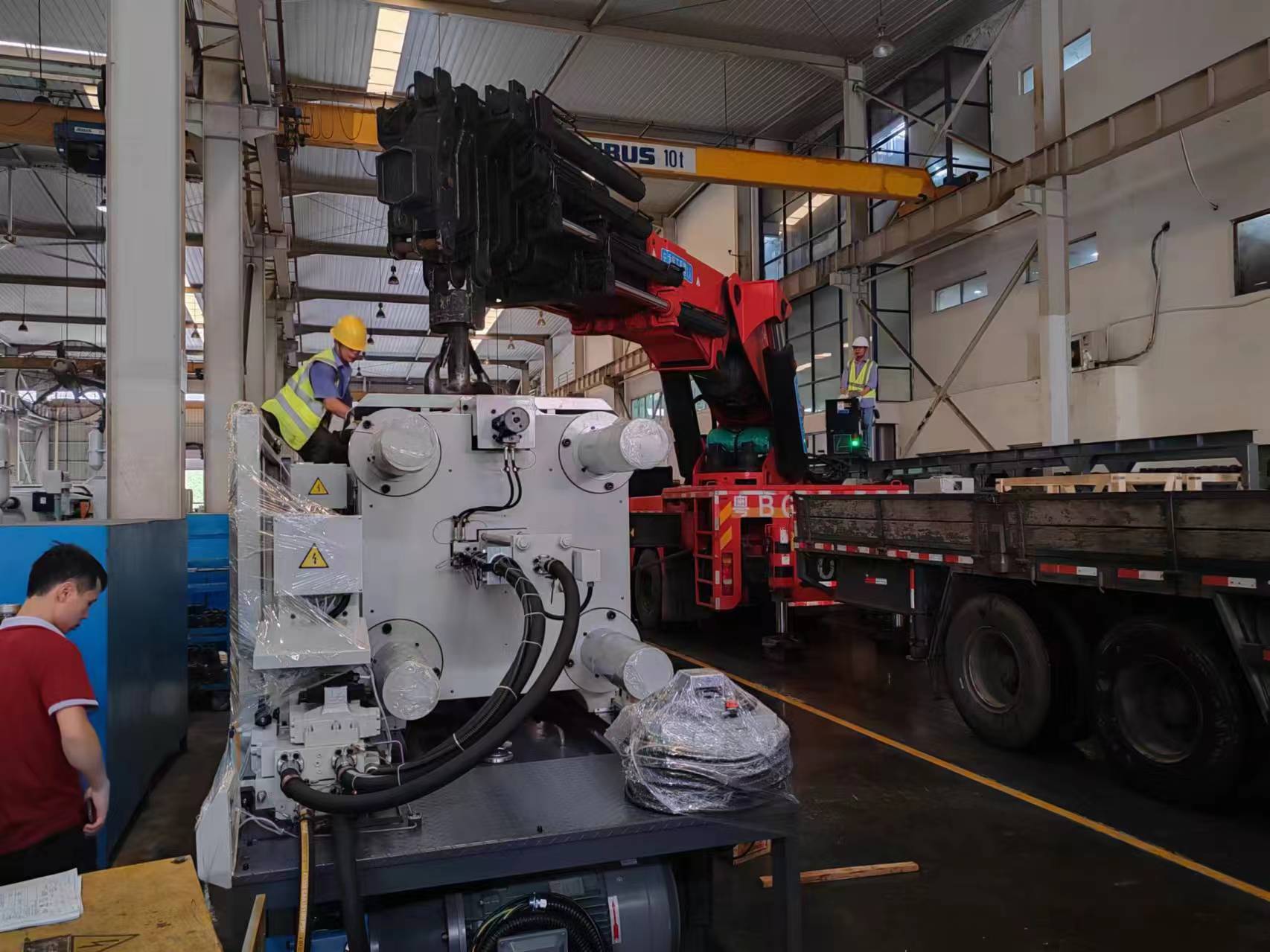Braided Weld
LK Die Casting Machine / 2024-09-14 14:41:02
2024-09-14 by Cherry
In modern manufacturing, die-casting machines and welding
technology is widely used in various production processes.
Die-casting machines have become an indispensable tool for
many industries with their efficient and precise metal-casting
capabilities, while "Braided Weld" in welding technology,
as a special welding method, provides structural strength
and stability.

When discussing the relationship between die-casting machines
and braided weld, although the two belong to different
process fields, they are interconnected and complementary
in metal processing and manufacturing, especially in the
production of parts, later assembly, and strengthening of
structural strength.
This article will explore the relationship between die-casting
machines and braided weld in depth, from the three perspectives
of process complementarity, application scenarios, and future
technological trends, to help you better understand how they
work together in modern manufacturing.

What is a die-casting machine?
A die-casting machine is a device that injects molten metal
into a mold through high pressure to manufacture metal parts
with complex shapes, high precision, and high strength.
The die-casting process is usually used to mold lightweight
metals such as aluminum, zinc, and magnesium, and are widely
used in automobiles, aerospace, and electronic products.
The core advantages of die-casting machines are their fast
production speed, high part precision, low waste, and the
ability to mass-produce products with strong consistency.

What is a Braided Weld?
Braided welding is an important technology in the field of
welding. It forms a strong and beautiful weld by weaving
metal wires or metal strips together in a specific way.
Braided Welds have high strength and sealing properties,
can effectively connect various metal materials, and are
widely used in aerospace, automobile manufacturing,
petrochemical and other fields.
Braided Weld is a welding method that forms a braided
pattern by alternating the swinging welding gun. It is
an important technology in the field of welding and is
often used in welding that requires high strength, crack
resistance, sealing, and thicker materials.
Its unique braided structure can effectively connect various
metal materials, enhance the mechanical properties of the
weld, and make the connected metal parts have higher fatigue
resistance and impact resistance. It is widely used in aerospace,
automobile manufacturing, petrochemical, and other fields.
The connection between the die-casting machine and braided
weld
Although die casting and welding are two completely different
metal processing processes, die-casting machines, and braided
welds are closely related in some scenarios, especially in
the later processing and assembly of parts.
The following are some key points of the connection between
the die-casting machine and braided weld:
1. First of all, from the perspective of materials:
Metal materials used by die-casting machines are often also the
welding objects of braided welds. For example, light metal
materials such as aluminum alloys and magnesium alloys can
be formed into various parts by die-casting machines, and
can also be welded by Braided Weld when they need to be
connected. This makes the two have a certain intersection
in material selection and application.
2. Post-processing of die-cast parts:
Welding and reinforcement, The die-casting process can produce
metal parts with complex shapes and high dimensional accuracy,
but some large or complex structures require multiple die-cast
parts for assembly.
In these cases, welding technology, especially braided welds,
becomes an important subsequent processing method. Through
welding, multiple die-cast parts can be seamlessly connected,
while braided welds can enhance the strength and durability
of the joints.
For example, in the automotive industry, some parts of the
frame may be aluminum alloy parts manufactured by die-casting,
which need to be assembled and reinforced by welding.
Braided welds can ensure that these joints do not easily
crack or damage during long-term use, thereby improving
the safety and service life of the entire vehicle.
3. Role in repair and maintenance:
Although die-cast parts usually have high precision and
strength, they may still be damaged due to fatigue or overload
during use.
In this case, it is a common practice to use braided welds
for repair. Welders weld new metal layers on damaged die-cast
parts using braided welds, thereby repairing cracks or broken
parts and restoring the function of the parts.
Especially for die-cast parts with large sizes and complex
shapes, such as engine blocks or transmission housings, the
repair cost is high, so local repairs through braided welds
can not only reduce maintenance costs but also extend the
service life of parts.
4. Innovative development of composite processes:
In terms of production processes, die-casting machines, and
braided weld also have mutual influences. On the one hand,
parts produced by die-casting machines may require subsequent
welding processing, and the quality and performance of braided
welds are directly related to the reliability of the entire
product.
Therefore, when designing die-casting products, it is necessary
to consider the subsequent welding process requirements and
select the appropriate materials and structures to facilitate
the implementation of braided welds.
On the other hand, the process parameters of braided welds
will also affect the performance of die-casting products.
For example, excessively high welding temperatures may cause
deformation, cracking, and other problems in die-casting
products, so it is necessary to reasonably control the welding
process parameters to ensure compatibility with die-casting
products.
In recent years, the combination of die-casting process
and welding technology has gradually become an innovative
trend in the manufacturing field. In some special
manufacturing processes, die-casting, and welding technologies
are integrated and applied, which not only takes advantage
of the high efficiency and precision of die-casting machines,
but also combines the structural reinforcement effect of
braided welds.
For example, when producing large structural parts, manufacturers
can use die-casting to manufacture the main basic structure,
and then use braided welds to reinforce the key connection
points or pressure-bearing parts. Such a composite process
not only improves the strength of the parts but also
reduces the overall production time and cost.
5. Die-casting machines and Braided Welds are also closely
related in terms of quality control:
Products produced by die-casting machines need to undergo
strict quality inspections to ensure dimensional accuracy,
surface quality, etc. meet the requirements.
Braided welds also need to undergo various inspections, such
as appearance inspection, non-destructive testing, etc., to
ensure the quality and reliability of the
welds.
In actual production, only by organically combining the
quality control links between the two can the quality of the
entire product be ensured to be stable.
6. Environmental protection and maximization of material
utilization:
One advantage of the die-casting process is to reduce material
waste, but in some scenarios, welding technology, especially
braided welds can further improve the utilization rate of materials.
Through welding, manufacturers can re-weld and reuse the waste
or defective products generated during the die-casting process,
reduce resource waste and comply with the concept of sustainable
development.
This combination of die-casting and welding enables enterprises
to not only reduce production costs but also achieve green
manufacturing and improving environmental benefits.
7. From the perspective of application areas, die-casting
machines and Braided Weld often serve some high-end manufacturing
industries together:
For example, in the aerospace field, lightweight parts produced
by die-casting machines and structural parts connected by braided
welds together constitute an important part of the aircraft.
These parts require not only high strength and high precision
but also good fatigue resistance and corrosion resistance.
Therefore, the technical level of die-casting machines and
braided welds directly affect the quality and performance
of aerospace products.
Future technological development of both
The combination of die-casting machines and braided welds
will become more common in the future manufacturing field,
especially with the advancement of automation technology
and intelligent manufacturing. The interaction of these
technologies are expected to bring more efficient and precise
production processes while reducing material costs and energy
consumption.
1. Introduction of automation technology: At present, the automation
level of die-casting machines is already quite high. In the
future, welding technology will also develop towards a higher
level of automation. Braided welds can be achieved by robots,
thereby improving production efficiency and reducing human errors.
2. Application of new materials: With the development of new alloy
materials, die-casting machines, and welding technology will
face new challenges and opportunities. Die-casting machines
may need to adapt to higher temperatures and stronger toughness
materials, while braided welds may need to adjust the welding
parameters to cope with the physical properties of new
materials.
3. Integration of intelligent manufacturing: Future manufacturing
plants may adopt integrated intelligent systems to combine
die-casting and welding processes on a production line,
and achieve more intelligent production management and
quality control through the assistance of sensors, data
analysis and artificial intelligence.
Conclusion
Die-casting machines and braided welds seem to belong to
different fields, but they often complement each other in
metal processing and manufacturing. The die-casting process
provides an efficient and precise solution for the mass
production of parts, while braided welds play a vital role
in post-processing, repair, and strengthening.
With the continuous advancement of technology, the relationship
between die-casting machines and braided welds will become
closer, and together they will promote the development of the
manufacturing industry towards a more efficient, environmentally
friendly and intelligent direction.
For manufacturing companies, understanding and rationally
using the combination of die-casting and welding technology
can bring more innovation opportunities and improve product
quality and production efficiency. Therefore, the interaction
between the two is not only a complementary process but
also a key driving force for the development of the industry.
Although die-casting machines and braided welds play a role
in different fields, there is a close connection between
them. In modern industrial production, only by fully recognizing
the relationship between the two and rationally using their
advantages can we better meet market demand and promote the
continuous development of the manufacturing industry.
Whether it is from material selection, production process,
or quality control and application field, die-casting machines
and braided welds are interdependent and mutually reinforcing.
In the future, with the continuous advancement of science
and technology, I believe that the technology of die-casting
machines and braided welds will continue to innovate and
improve, creating better industrial products for mankind.
In today's highly competitive market environment, companies
must continuously improve their technical level and product
quality in order to be invincible in the market. This is
especially true for companies involved in die-casting machines
and braided welds. Only by deeply studying the relationship
between the two, constantly optimizing the production process
and improving product quality can we win more opportunities
in the market.
At the same time, the government and industry associations
should also play an active guiding role, increasing investment
in the research and development of die-casting machines and
braided weld technology, promoting industry-university-research
cooperation, and promote technological innovation and industrial
upgrading. By formulating relevant standards and specifications,
strengthening quality supervision, and creating a good
development environment for enterprises.
In addition, educational institutions should also pay attention
to the training of professionals related to die-casting machines
and braided welds. Set up relevant courses and majors to cultivate
professionals with a solid theoretical foundation and practical
ability to provide talent support for the development of the industry.
Looking back on history, the development of die-casting machines
and braided welds are full of hardships and glory. From the initial
simple equipment and processes to today's high-tech and
high-precision production technologies, they have witnessed
the continuous progress of human industrial civilization.
Looking to the future, we have reason to believe that under
the guidance of science and technology, die-casting machines
and braided welds will continue to play an important role
and create a better future for mankind.
Let us look forward to die-casting machines and braided welds
shining more brightly on the future industrial stage and
making greater contributions to promoting the development of
the global manufacturing industry.
For more info, you can refer to:
https://www.tiktok.com/@lk_diecastingmachine/video/7405113006880820522
https://www.youtube.com/shorts/JLX410QV_kw
To learn further info about Die Casting Machines,
pls contact LK Die Casting Machine Authorized Official Agent
LK OFFICIAL AGENT OFFICE DCM
LK Die Casting Machine Authorized Official Agent for Egypt(EGY)
Saudi Arabia(ksa)
United Arab Emirates(UAE)
The Islamic Republic of Iran(Iran)
Qatar(QAT)
The State of Kuwait(Kuwait)
The Middle East
Address: 1. Industry Zone, South of Port Said Kebly, Cairo, Egypt
2. EX 14., EASTERN RING ROAD, AI RAYAN DISTRICT,
RIYADH, SAUDI ARABIA
Arabic Website: https://ae.zazdiecasting.com/
English Website: https://www.zazdiecasting.com/
Phone/WhatsApp/Wechat: 0086 13598704163
Mobile: +20 101 304 3317 +20 150 181 8310
Email: jack@zazmae.com ahmedmahmoud@zazmae.com
OTHER CONTENT
-

2024-09-19 14:16:15 LK Cold Chamber Die Casting Machine DCC900 Locking Force: 9000KN Die Height: 400-1000mm Space Between Tie Bars: 930x930mm Shot Weight: 13.5Kg Casting Area Max:2250c㎡
More -

2024-09-19 14:11:06 LK Cold Chamber Die Casting Machine DCC280 Locking Force: 2800KN Die Height: 250-650mm Space Between Tie Bars: 560x560mm Shot Weight: 2.9Kg Casting Area Max:700c㎡
More -

2024-09-19 10:23:07 LK Cold Chamber Die Casting Machine DCC580 Locking Force: 5000KN Die Heigh: 350-850mm Space Between Tie Bars: 760x760mm Shot Weight: 6.9Kg Casting Area Max:1250c㎡
More -

2024-09-19 10:11:20 LK Cold Chamber Die Casting Machine DCC400 Locking Force: 4000KN Die Height: 300-700mm Space Between Tie Bars: 669x669mm Shot Weight: 4.7Kg Casting Area Max:1000c㎡
More

